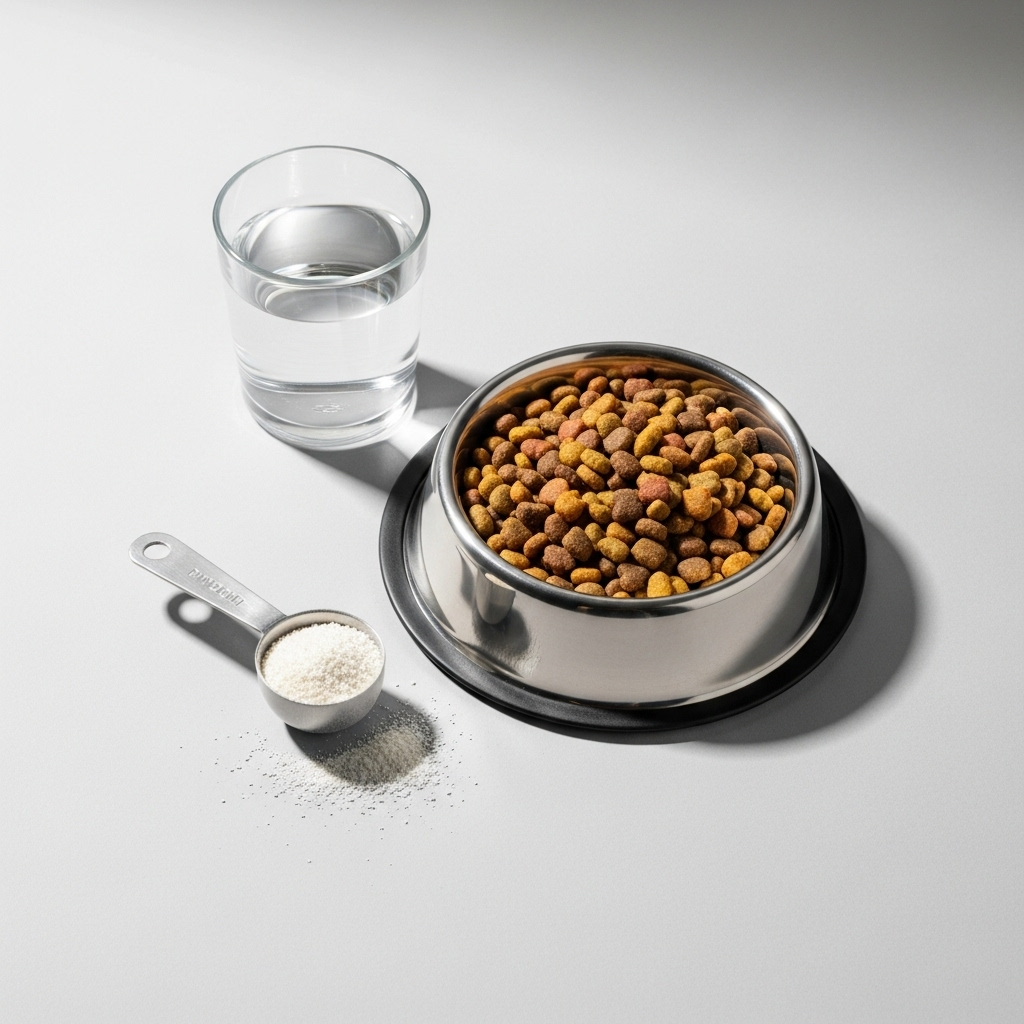Picking a Probiotic for Dogs With Sensitive Digestion

Many dogs experience sensitive digestion at some point in their lives — loose stool, gas, occasional vomiting, or food intolerance. Probiotics can be a helpful tool to support gut balance and stool quality, but not all products are right for every dog. This guide explains how probiotics work, what to look for when choosing one for a dog with sensitive digestion, how to introduce them safely, and when to consult your veterinarian.
What are probiotics?
Probiotics are live microorganisms (typically bacteria or beneficial yeasts) that, when given in adequate amounts, may provide health benefits. In the gut, they can help maintain a balanced microbiome, support digestion, and compete with potentially harmful microbes. For dogs with sensitive digestion, the goal is to support a stable intestinal environment and improve stool consistency without causing additional upset.
Signs your dog may have sensitive digestion
- Intermittent loose stools or diarrhea
- Frequent gas or bloating
- Food sensitivities or sudden dislike of certain foods
- Mild chronic vomiting (occasionally)
- Changes in appetite or stool odor
If your dog has severe, persistent, or worsening signs (blood in stool, repeated vomiting, weight loss, lethargy), seek veterinary care promptly.
How probiotics can help
Probiotics may help dogs with sensitive digestion by:
- Improving stool consistency and reducing the frequency of loose stools
- Supporting digestion of food and absorption of nutrients
- Competing with or inhibiting harmful bacteria
- Supporting recovery after gastrointestinal upset or antibiotic use
- Helping regulate immune-related gut responses
Keep in mind that benefits vary by strain, dose, and the individual dog. Not all dogs respond the same way.
Choosing the right probiotic for a dog with sensitive digestion
Key strains to consider
- Enterococcus faecium — commonly used in veterinary products for stool consistency.
- Lactobacillus species (e.g., L. acidophilus, L. rhamnosus) — support general gut balance.
- Bifidobacterium species — often used for colonic health and digestion.
- Bacillus coagulans — spore-forming, shelf-stable, may survive stomach acid.
- Saccharomyces boulardii — a beneficial yeast useful during or after antibiotic treatment because antibiotics don’t kill it.
CFU and dosing
CFU (colony-forming units) indicates the number of live microbes. Products often range from hundreds of millions to tens of billions of CFU per serving. For dogs with sensitive digestion, many veterinary products fall in the 1–10 billion CFU range per serving; larger dogs may receive higher counts. Always follow the product label and your veterinarian’s advice — more is not always better.
Form factor and added ingredients
Probiotics come as powders, capsules, chews, or included in food. For sensitive dogs, choose simple formulas with minimal additives. Be cautious with products containing prebiotics (e.g., inulin, FOS): these can feed beneficial bacteria but sometimes cause gas or bloating in sensitive dogs. Probiotic-only formulas or those with small amounts of prebiotic fibers are often easier to tolerate.
Quality and storage
Look for veterinary-specific formulations or products manufactured under good quality controls (GMP). Check for clear labeling of strains and CFU at the time of manufacture and, ideally, at the time of expiration. Some strains require refrigeration; others are shelf-stable. Store as directed to maintain potency.
How to introduce probiotics safely
- Talk to your veterinarian before starting, especially if your dog is young, pregnant, elderly, on medication, or immunocompromised.
- Start with a small dose (often half the recommended dose) for 3–7 days, then increase to the full dose if well tolerated.
- Mix powder or capsule contents into a small amount of food, or give a chew if your dog accepts it.
- Monitor stool consistency, gas, appetite, and overall behavior for 2–4 weeks. Many dogs show improvement in 3–7 days, but some take longer.
- If your dog is on antibiotics, separate dosing by a few hours or use Saccharomyces boulardii, which is not affected by antibiotics. Ask your vet for specific timing advice.
When not to use—or when to be cautious
Exercise caution or consult your vet before using probiotics if your dog has:
- A weakened immune system or is on immunosuppressive medication
- Severe or acute GI disease (persistent vomiting/diarrhea, blood in stool)
- Recent major surgery or critical illness
In rare cases, probiotics can cause mild gas or bloating initially. If your dog’s condition worsens after starting a probiotic, stop use and contact your veterinarian.
Pros and Cons
| Pros | Cons |
|---|---|
| Can improve stool quality and reduce occasional diarrhea | Not all formulas work for every dog; results vary |
| May support digestion and recovery after antibiotics | Some products contain unnecessary fillers or unclear labeling |
| Several strain options (including yeast) suitable during antibiotics | Rare risk for immunocompromised dogs; vet consultation needed |
FAQ
1. How long until I see results?
Some dogs show improvement in stool quality within 3–7 days; others may take 2–4 weeks. Track symptoms and consult your vet if there’s no improvement after a month.
2. Can I give human probiotics to my dog?
Some human probiotics are safe, but strains, doses, and excipients may not be ideal for dogs. Veterinary-formulated probiotics are usually a better choice. Check with your vet before using human products.
3. Will probiotics interact with antibiotics?
Some antibiotics can reduce probiotic bacteria. To help, separate doses by a few hours. Saccharomyces boulardii (a yeast) is not affected by antibiotics and is often recommended during antibiotic therapy. Ask your vet for specifics.
4. Can probiotics cause side effects?
Common mild side effects include temporary gas or soft stools during the first few days. Severe reactions are rare but possible in immune-compromised animals. If your dog worsens, stop the probiotic and contact your veterinarian.
Key Takeaways
- Probiotics can help dogs with sensitive digestion but effects depend on strain, dose, and the individual dog.
- Choose clear-label, veterinary-grade products when possible and follow storage instructions.
- Introduce slowly, monitor stool and behavior, and separate probiotic and antibiotic dosing if needed.
- Contact your veterinarian before starting probiotics for puppies, elderly dogs, immunocompromised pets, or dogs with severe GI signs.
Tip: Keep a short journal of your dog’s stool consistency, appetite, and energy for 2–4 weeks after starting a probiotic. This helps you and your veterinarian judge whether the product is helping.
Disclaimer: This information is educational and not a substitute for professional veterinary advice. Always consult your veterinarian before starting any new supplement or if your dog has severe or persistent digestive issues.

Leave a Reply